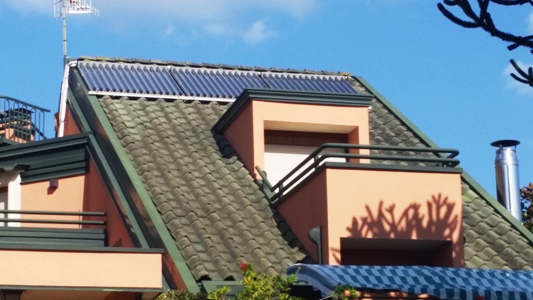

Italy: Market Decline Continues Despite Appealing Incentives
Italy’s solar thermal market experienced another 10 % drop in 2016 despite the availability of at least two appealing incentive schemes: a 65 % tax reduction for small systems and Conto Termico 2.0, a revised national support scheme in place since the beginning of 2016 to support plants of up to 2,500 m². To find out more about the primary reasons for the continuing decline of the national market, solarthermalworld.org spoke with Federico Musazzi, Secretary General of Assotermica, the Italian Association of Manufacturers of Equipment and Components for Heating Systems, and official at the umbrella organisation ANIMA, the Federation of Italian Associations in the Mechanical and Engineering Industries.
Photo: Riccardo Battisti
Solarthermalworld.org: In our last interview in March 2015, you predicted a tough year ahead for solar. What happened in the end and more recently in 2016?
Musazzi: Unfortunately, my hunch was right and the Italian solar thermal market ended up with a loss of 14.5 % in 2015. The last 2016 forecast we published in November showed an annual decline of almost 10 % based on our year-end statistics. It seems as if nothing can stop the market from spiralling downwards.
Solarthermalworld.org: What about market shares and key actors of the industry?
Musazzi: Solar thermal specialists have suffered more from the tough spot the industry is in, and market shares have reversed. Non-specialised heating companies now supply about 70 % of the market.
Solarthermalworld.org: Which main trends do you see developing in technologies and applications? Across several EU countries, we see a clear shift away from small household installations in the residential segment towards medium-size and large plants for commercial and industrial clients, such as housing companies, tourism businesses and utilities.
Musazzi: Unfortunately, our market has not matured enough yet for this kind of shift; it is still dominated by small residential solar kits. The potential for a variety of applications and greater sizes is definitely there, but a viable, larger-scale development would require a greater degree of specialised knowledge within solar energy and heating companies. Designing, selling, installing and operating systems is an entirely different job from the one we usually do.
Solarthermalworld.org: Despite the very favourable framework established by the revised incentive scheme, Conto Termico 2.0?
Musazzi: Yes, it is true that this support mechanism looks really promising for medium-size and large plants of up to 2,500 m², as it can cover between 40 and 60 % of the investment cost. However, the advantages of such applications are neither well-known by potential users nor promoted by supply-side actors.
Solarthermalworld.org: What has changed for small plants after Conto Termico 2.0 was introduced at the beginning of 2016?
Musazzi: There have been two important changes. The first established a default list of products. Once it is set up – we are still waiting for its implementation – it will allow for a simplified incentive application procedure. The second change concerns the incentive payment itself: If the total amount is below 5,000 euros, as is the case for many small plants, the entire amount will be paid to the user in just one instalment instead of spreading it over a 2-year period, as in the previous version of the scheme. This could make Conto Termico a more attractive option for owners of small plants, especially investors or entities which have net zero revenue and cannot utilise tax credits.
Solarthermalworld.org: So where should we look for primary market barriers?
Musazzi: The building crisis is still one principal reason for the market drop, as solar thermal has always been associated with newbuilds or renovation. Another reason is the limited appeal of the new package label for energy-efficient space and water heating systems. It has yet to penetrate the market, which means that the advantages of integrated solutions including solar thermal cannot be highlighted accordingly.
Solarthermalworld.org: You have just mentioned the key role of buildings: What impact does the renewable obligation have on newbuilds and building stock in need of renovation?
Musazzi: At present, the new mandatory solar share in the total heating and cooling demand of new buildings, which was supposed to come into force on 1 January 2017, should be at 50 %, as stipulated in the original Law 28 in 2011. This would represent a major barrier to solar thermal use, since the technology cannot generate such a high amount of energy on its own. However, the government is considering to postpone the new requirement and retain a 35 % solar share as part of the national regulations.
About Assotermica and ANIMA
Assotermica’s five-staff office is located in Milano. The association has around 60 members, which combined have a 90 % market share in some subindustries.
ANIMA represents a market employing around 194,000 people at a total turnover of about EUR 40 billion a year. Founded in 1914, it is comprised of over 60 associations and industry groups and has 1,000 company members.